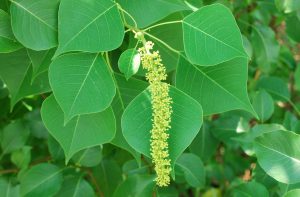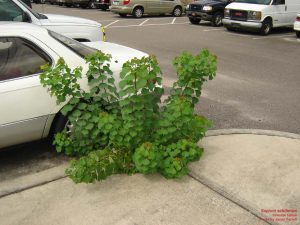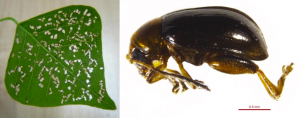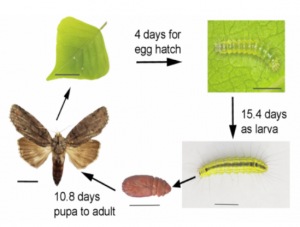Beekeepers in the southeast have raised concerns regarding the ongoing removal of a favored plant species for their managed hives, the Chinese tallow tree (Triadica sebifera). Producing flowers as early as February and lasting through May, the Chinese tallow tree has been heavily utilized as a nectar-rich resource for these non-native insect pollinators, contributing to the economic production of honey and deployed pollination services for cultivated crops.

However, the Chinese tallow tree is one of the most aggressive and widespread noxious weeds in the southeastern U.S. Native to China, it was originally introduced to the U.S. in the late 18th century for use in wax and oil production and subsequently cultivated across wide expanses of the southeastern U.S. in an effort to establish a commercial soap industry. Later, it was introduced as… you guessed it, an ornamental in residential landscapes.
Officially declared a state noxious weed in Florida in 1998, Louisiana, Texas, and Mississippi similarly followed suit, adding Chinese tallow to their noxious weed lists, thereby making it illegal to move or distribute. Estimated economic costs of controlling this species in both native and cultivated areas of Florida, Texas, Louisiana, and Mississippi over the last two decades ranges from $200-400 million.

The Chinese tallow tree has an incredibly rapid growth rate and can successfully establish in a variety of environments such as grassland, freshwater wetlands, swamps, coastal prairies, riparian habitats, forests, disturbed residential and commercial areas, roadsides, and agricultural lands. Growing up to 1 meter a year, it can quickly reach heights of up to 50 feet and live for 15-50 years, with some specimen reported to survive up to 100 years.
It negatively impacts our native ecosystems by forming dense monocultured stands and outcompeting native plants, altering not only species composition but nutrient cycling, fire regimes, and biodiversity. As a prolific seed producer with excellent germination, seeds are consumed and disseminated by frugivorous birds and water movement. Areas of natural marsh and prairie are quickly converted to woodland ecosystems. In fact, conversion of land area from coastal prairies to woodland habitat in parts of Texas increased from 2% in 1970 to 16% in 1990 to >30% in 2000.

Recently, proposed efforts by USDA-APHIS Plant Protection and Quarantine program are being reviewed for the permitted released of two biocontrol agents to aid in limiting the spread of Chinese tallow trees. Bikasha collaris is a small flea beetle that lies eggs in the soil at the base of the tree, where the larva will progressively feed on the roots. The adult flea beetles will additionally feed on the leaves and young, woody stems. Gadirtha fusca is a defoliating moth species, which voraciously feed on leaf tissue in their immature, caterpillar form, reducing overall growth and plant vigor over time.

While some beekeepers have expressed concern regarding the removal of this invasive noxious weed, citing it as a nectar-rich floral resource for their hives, it is critical to impart the overall detrimental effects this plant has to our native ecosystems. Moreover, these biocontrol agents will act in reducing the quantity of Chinese tallow tree across expanses of the southeastern U.S., not eliminate the Chinese tallow entirely. These efforts will take several years (five or more) to prove effective. In the meantime, this progressive reduction will allow for other nectar-rich native floral resources to recover and expand their establishment, such as button bush (Cephalanthus occidentalis ), eastern redbud (Cercis canadensis), red maple (Acer rubrum), and Chickasaw plum (Prunus angustifolia). Equally important, current chemical control efforts employed on Chinese tallow can be potentially harmful to non-target organisms, like the honey bee and other native bee pollinators. The impact and effectiveness of all biocontrol efforts are evaluated by scientists through rigorous field trials prior to widespread release.
For more information on Chinese tallow, check out the FLEPPC Chinese Tallow Task Force Plan and the CABI Datasheet.
To learn more about native woody ornamentals for pollinators, be sure to check out the following resources: Florida Native Pollinator Plants and Attracting Native Bees to Your Florida Landscape.
 1
1
